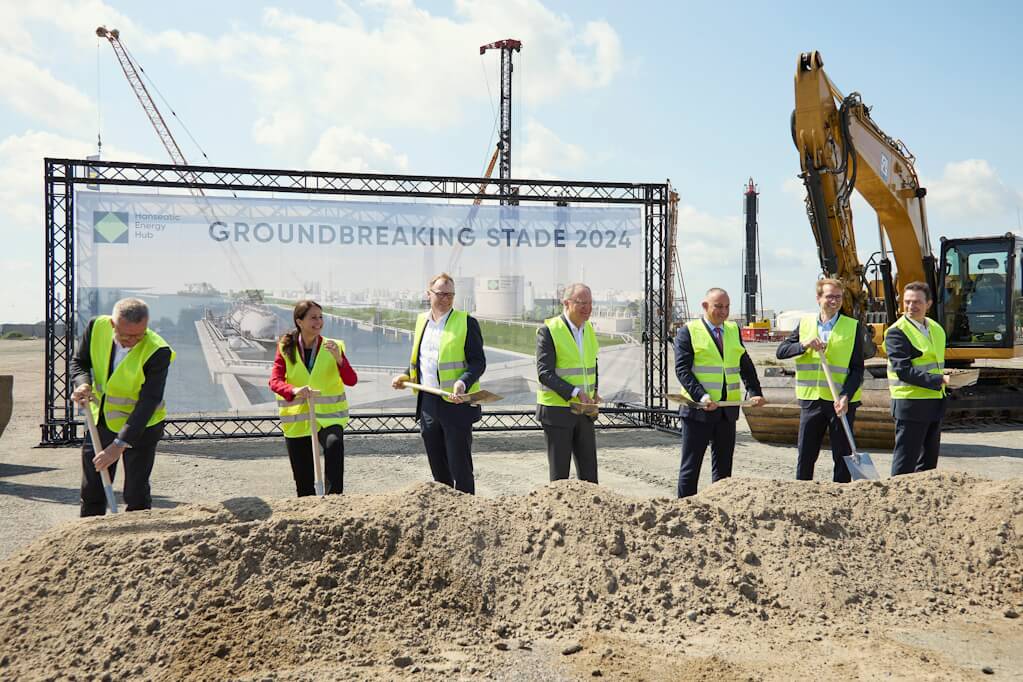The LNG tanker ISH arrives at Brunsbüttel in 2023. Next to it is the FSRU Hoegh Gannet in the Elbehafen port in Brunsbüttel.
The Russian-Ukrainian war and the pushback from Western governments have disrupted and distorted energy markets. Following sanctions against Russia and the destruction of the Nordstream pipeline, Europe started to import LNG from the USA, which stepped up its production, but now there is a risk of overcapacity. With an explosion in Texas leading to safety concerns and the disclosure that methane emissions are higher than previously thought, is the current LNG boom sustainable?
By James Chater
Outlook
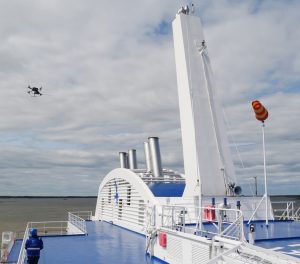
The LNG industry has seen a massive surge in capacity in recent years. The USA has stepped up exports to Europe to fill the gap left by the cessation of gas piped from Russia. The USA and Qatar have emerged as the top producers, pushing Australia into third place. Like Europe, Asia is also upping its import capacity as it hopes to replace coal with LNG. However, there are fears that the market could become flooded. This depends on the state of the world economy and how various geopolitical tensions play out, as well as the speed of the transition to renewables, which is proceeding rapidly in Europe, meaning that its dependence on LNG could decrease. In February, Shell optimistically stated that global demand for LNG would increase by more than 50% by 2040(1). However, in April the IEEFA noted sluggish demand and warned of oversupply within two years, with European demand decreasing between 2023 and 2030(2). Demand for natural gas seems already to have slowed and natural gas prices have descended from the record highs of late 2021 to 2022.
Other challenges
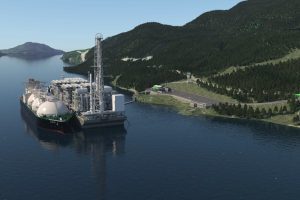
Two other concerns darken the LNG picture: safety and emissions. In June 2022, there was an explosion at the Freeport terminal in Texas after a blocked pipe valve caused a build-up of pressure and a leakage. Investigators reported that staff were overworked and tired, leading to defects being overlooked, and that the regulatory regime was decades-old and inadequately enforced(3).
This incident has revived discussion about exactly how safe LNG is. When hydrocarbons are released, they form a fine mist or vapour cloud that can explode when trapped in a confined space or whenever the wind is still. It is not only methane that is a hazard, but also refrigerants, a potentially explosive cocktail of methane, ethane, propane and other light hydrocarbons, sometimes with the addition of nitrogen.
The Freeport accident did not cause any injuries or deaths, but previous accidents have. The most serious occurred in 1944 in Cleveland, Ohio, when leaking gas caused an explosion killing 128 people. (It was this accident that prompted the invention of 9% nickel, as the Cleveland plant had been using low-nickel steel because of nickel shortages during World War 2.) Other fatalities occurred in 1973, at Staten Island, NY (37 dead); 1979, at Cove Point, Maryland (one dead, one injured); 2004, in Skikda, Algeria (27 dead, 74 injured); 2012, in the Punto Fijo oil and LNG refinery in Venezuela (47 dead and 135 wounded; it is not known if LNG was the gas that leaked); and Toppenish, Washington (1 dead). Residents near LNG terminals are on edge and there is considerable pressure to switch to safer forms of energy.
As if this were not enough, it turns out that LNG is not the poster-boy transition fuel it was previously thought to be – at least not yet, and not in the USA. LNG produces lower CO2 emissions than coal but this is more than offset by methane leaks, which cause 80% more warming than CO2 in the first 20 years. So GHG emissions from LNG are overall much higher than previously thought: it has been claimed LNG produced from shale gas produces 33% more emissions than coal(4). These emissions occur during shale gas extraction, on LNG-fueled ships (methane slip) and during cargo unloading. Altogether, it turns out that LNG-fueled ships emit more GHG than traditionally fueled ships(5).
Does this mean LNG is not the way to go? Climate activists persuaded President Biden to pause pending and future export licence applications but this measure was blocked by a federal judge. However, technology can come to the rescue: for example, Wärtsilä is converting its dual-fuel engines to spark gas, thereby improving the combustion process. Other solutions, more costly and more long-term, would be to fuel ships with hydrogen or ammonia instead of LNG.
Exports
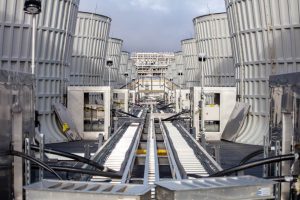
Despite safety and emission concerns, in 2023, North America signed 21 export contracts, more than any other country. Present export capacity is set to double by 2028. Five export projects are currently under construction – Plaquemines, Corpus Christi Stage III, Golden Pass, Rio Grande (Phase I), and Port Arthur (Phase I) – with others planned. In Canada, three terminals are under construction in British Columbia: Kitimat (LNG Canada), Woodfibre and Cedar FLNG. New Fortress Energy has started up its Fast LNG Altamira (two FLNGs) in Mexico and the Barcarena terminal in Brazil. A further liquefaction plant, Energía Costa Azul, is under construction in Mexico.
If the USA is important for Europe, Qatar’s markets lie mainly to the east. The country plans to increase its capacity by 85% by 2030 to meet growing demand. QatarEnergy is expanding North Field East (the world’s four largest four LNG trains), with the help of Technip Energies and Chiyoda and is planning to expand its North Field West field. The company recently ordered 18 ultra-large (Q-Max class) LNG carriers from a Chinese shipyard. Oman is adding an LNG train at its Qalhat Industrial Complex in South Sharqiyah Governorate, and Technip is building two trains at the Ruwais LNG in the UAE.
Australia’s LNG construction has slowed in recent years, but the government has said it plans to remain a reliable partner for LNG until 2050. Woodside’s Scarborough gasfield is two-thirds complete and will start producing gas in 2026. A new pipeline will connect to the Pluto facility, where a second train is being built.
Santos’s Darwin LNG Life Extension project (undertaken to process gas condensate from the Barossa field) has been awarded to UGL.
Imports

Asia is the largest LNG import market. In China, imports are expected to reach a record level in 2024. In November 2023, Sinopec put into service the world’s largest LNG storage tank (270,000 cu m) at Qingdao. So far in 2024, four new terminals and two peak shaving and storage tanks have come online. The second-highest regasification capacity additions in Asia from 2023 to 2027 are expected to occur in India. In June, it was found that Indian imports had risen 11.4% year on year. However, existing terminals are under-utilised. Hindustan Petroleum’s terminal at Chhara in Gujarat is expected to come online soon. Other countries planning or constructing terminals include Vietnam, Indonesia, Malaysia and Singapore. The Philippines unveiled its first integrated LNG facility at Batangas: an import terminal and two gas-fired plants.
After Asia, the most important market is Europe, whose economy has been faltering because of higher energy costs. Russia is still exporting natural gas (including LNG) to Europe but the EU is targeting a ban on Russian fuel imports by 2027. As a country with a strong manufacturing sector, Germany is especially vulnerable to energy shortages. It has therefore wasted no time in building new capacity. Projects include: Brunsbüttel FSRU (also known as Elbehafen LNG) started regular commercial operations in May 2023. The FSRU will be replaced by an onshore terminal, scheduled to start operations in 2026. Mukran FSRU (also known as Mukran LNG Terminal, Rügen LNG Terminal and Energy Terminal Mukran) is located off the port of Mukran on Rügen Island. It went into operation in September 2024, despite opposition from local groups. It consists of two FSRUs.
Wilhelmshaven 2. In the second half of 2024, the “Excelerate Excelsior” will become Deutsche Energie Terminal’s second FSRU-based LNG terminal in Wilhelmshaven to start operating.
Hanseatic Energy Hub (HEH) started construction in Stade, Lower Saxony, in June 2024. The plant is to be converted from LNG to ammonia as a hydrogen-based energy source by the end of 2043.
In Greece, commercial operations of Gastrade’s Alexandroupolis LNG terminal began on 1 October. In Italy, the Punta Marina floating terminal is due to become operational off Ravenna in 2025.
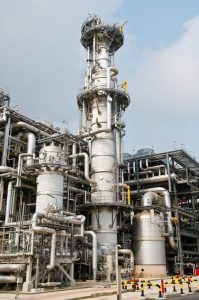
Materials
LNG is a cryogenic environment that requires ductile and crack-resistant materials, ones that can be easily welded without causing defects such as brittle fracture. This necessitates the use of stainless steel, 6-9% nickel steels, nickel alloys or aluminium, depending on the application.
LNG boils at -162°C. For gases with temperatures between -104°C and -196°C, 9% Ni steel is standard, but since 2013 the less costly 7% Ni steel is now recognised as having the same tensile and impact properties as 9% and has been applied on LNG land storage tanks since 2017.
References
- https://www.shell.com/news-and-insights/newsroom/news-and-media-releases/2024/global-lng-demand-to-grow-beyond-2040.html
- https://ieefa.org/articles/ieefa-tidal-wave-new-lng-supply-flood-market-amid-demand-uncertainty
- https://edition.cnn.com/2024/03/20/climate/natural-gas-export-vapor-cloud-explosion/index.html
- https://scijournals.onlinelibrary.wiley.com/doi/10.1002/ese3.1934
- https://www.transportenvironment.org/topics/ships/lng; https://www.transportenvironment.org/articles/methane-escaping-from-green-gas-powered-ships-fuelling-climate-crisis-investigation; https://theicct.org/pr-real-world-methane-emissions-from-lng-fueled-ships-are-higher-than-current-regulations-assume-new-study-finds-jan24/
Dive Deeper into Valve World
Enjoyed this featured article from our May 2025 magazine? There’s much more to discover! Subscribe to Valve World Magazine and gain access to:
- Advanced industry insights
- Expert analysis and case studies
- Exclusive interviews with valve innovators
Available in print and digital formats.
Breaking news: Digital subscriptions now FREE!
Join our thriving community of valve professionals. Have a story to share? Your expertise could be featured next – online and in print.
“Every week we share a new Featured Story with our Valve World community. Join us and let’s share your Featured Story on Valve World online and in print.”



